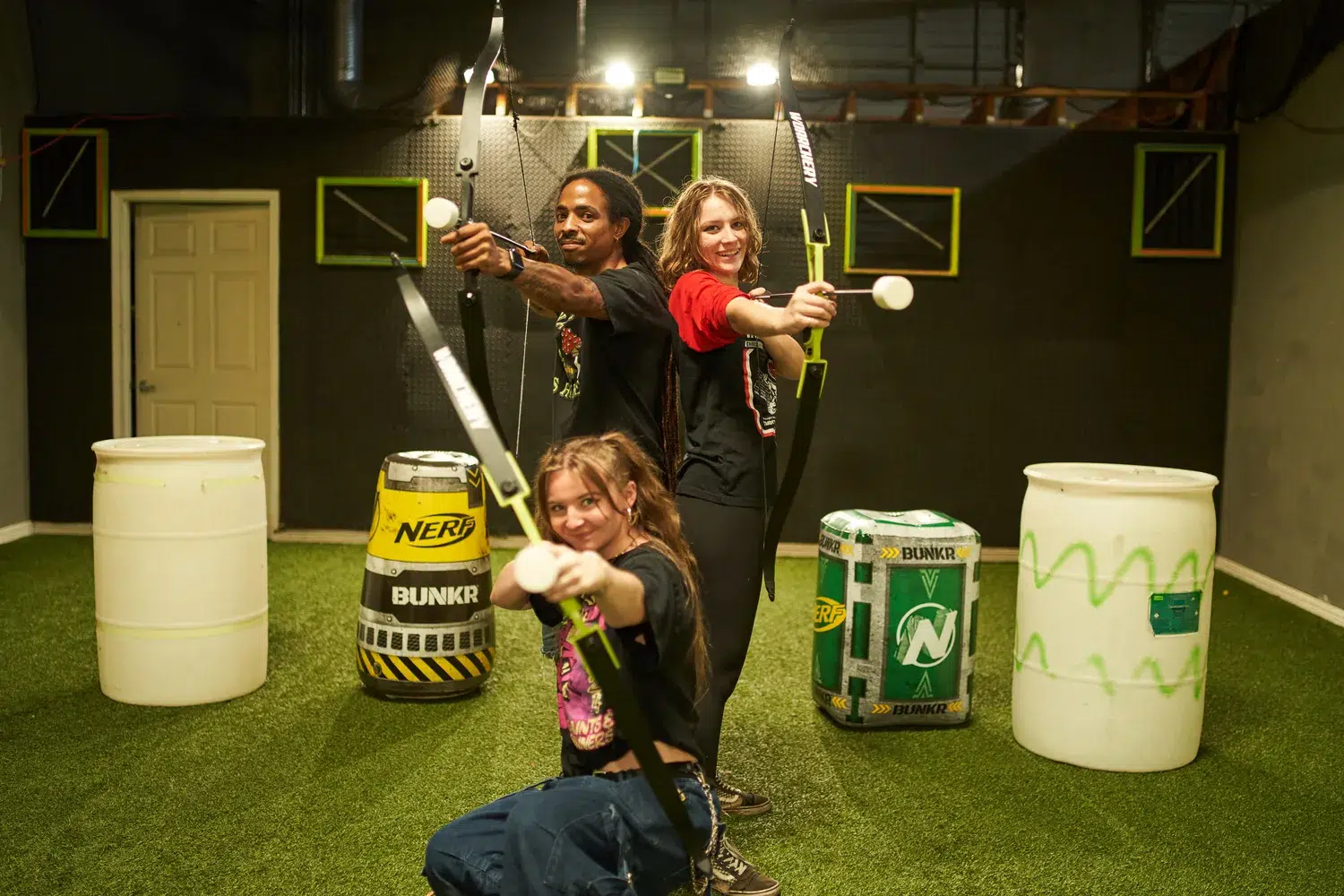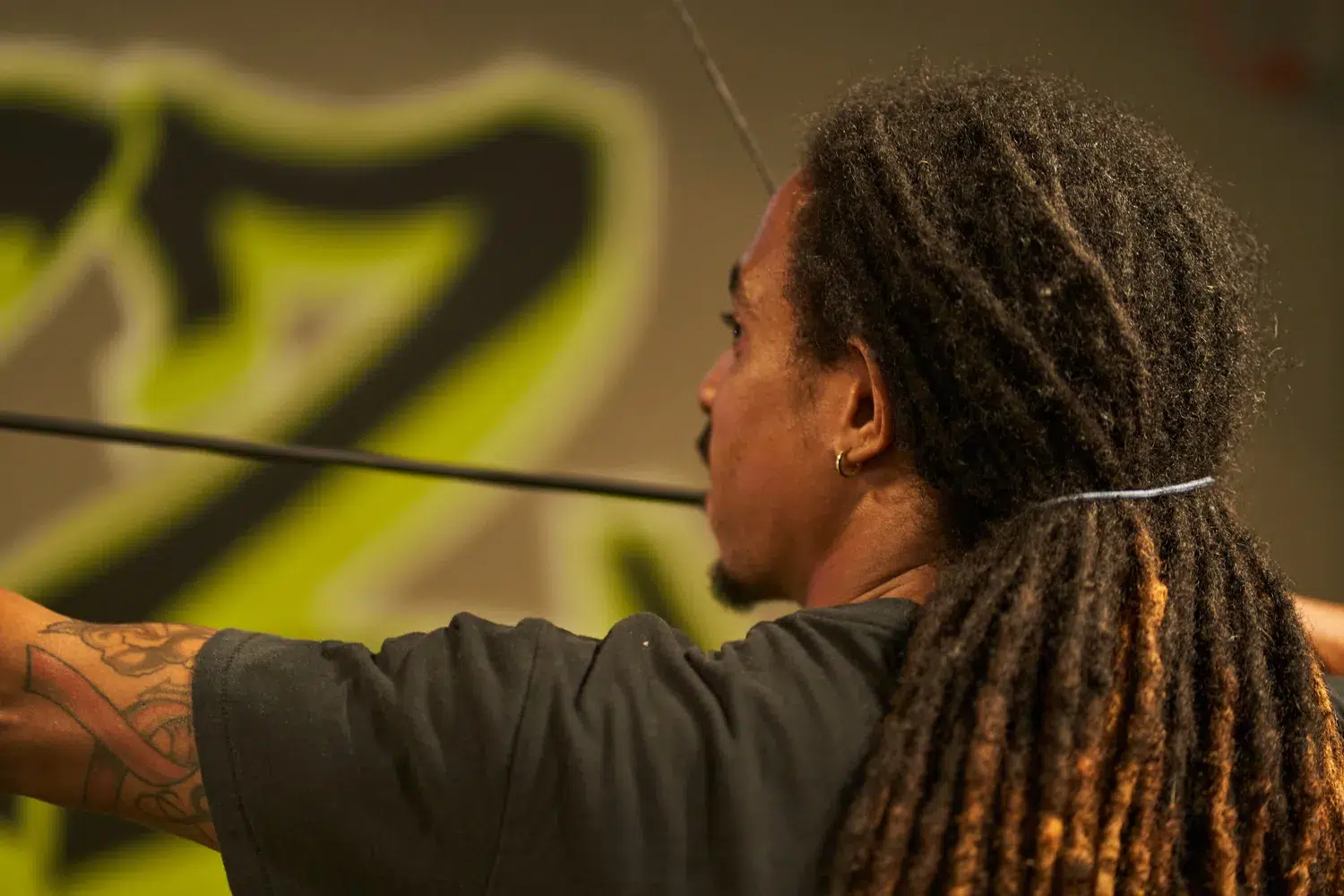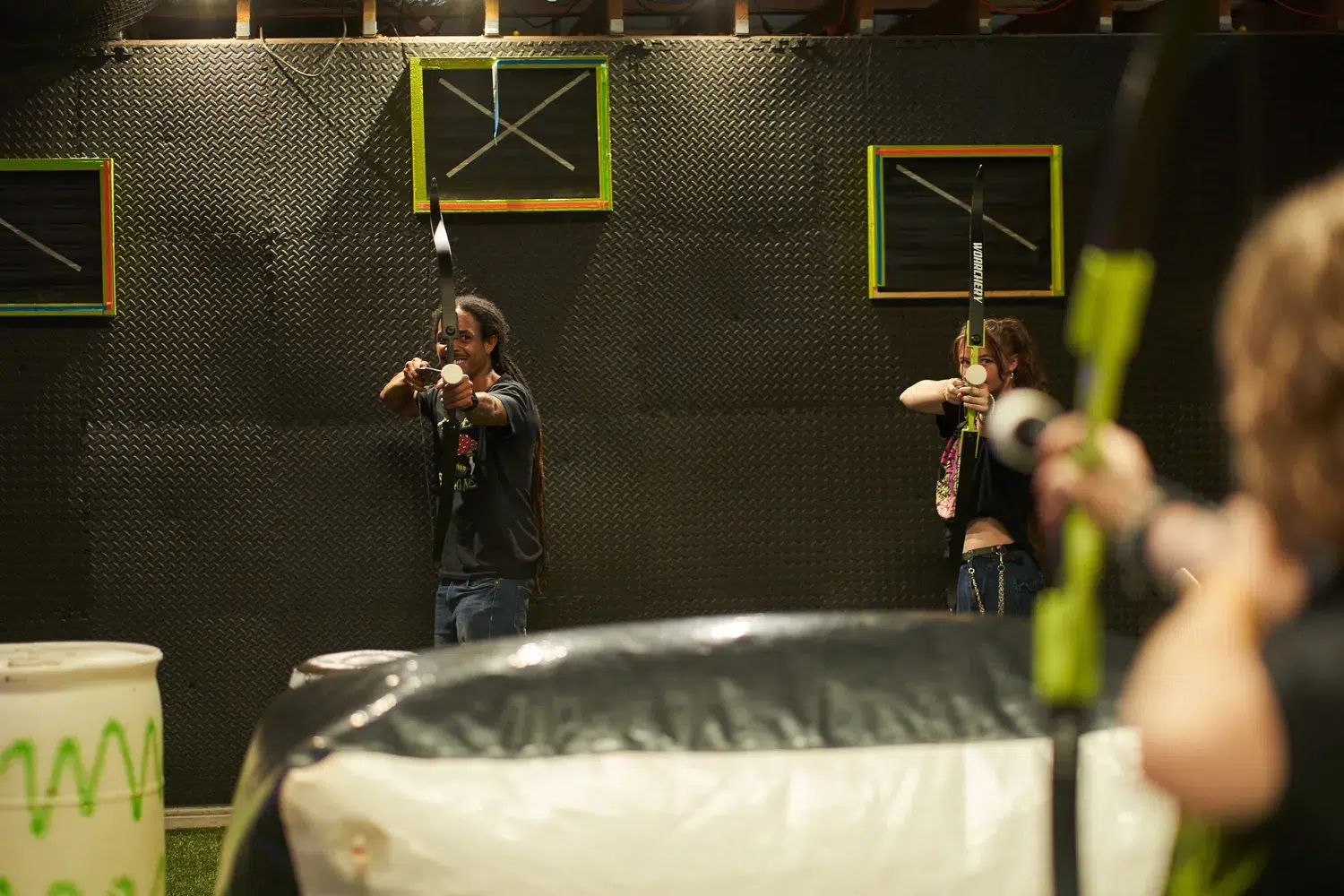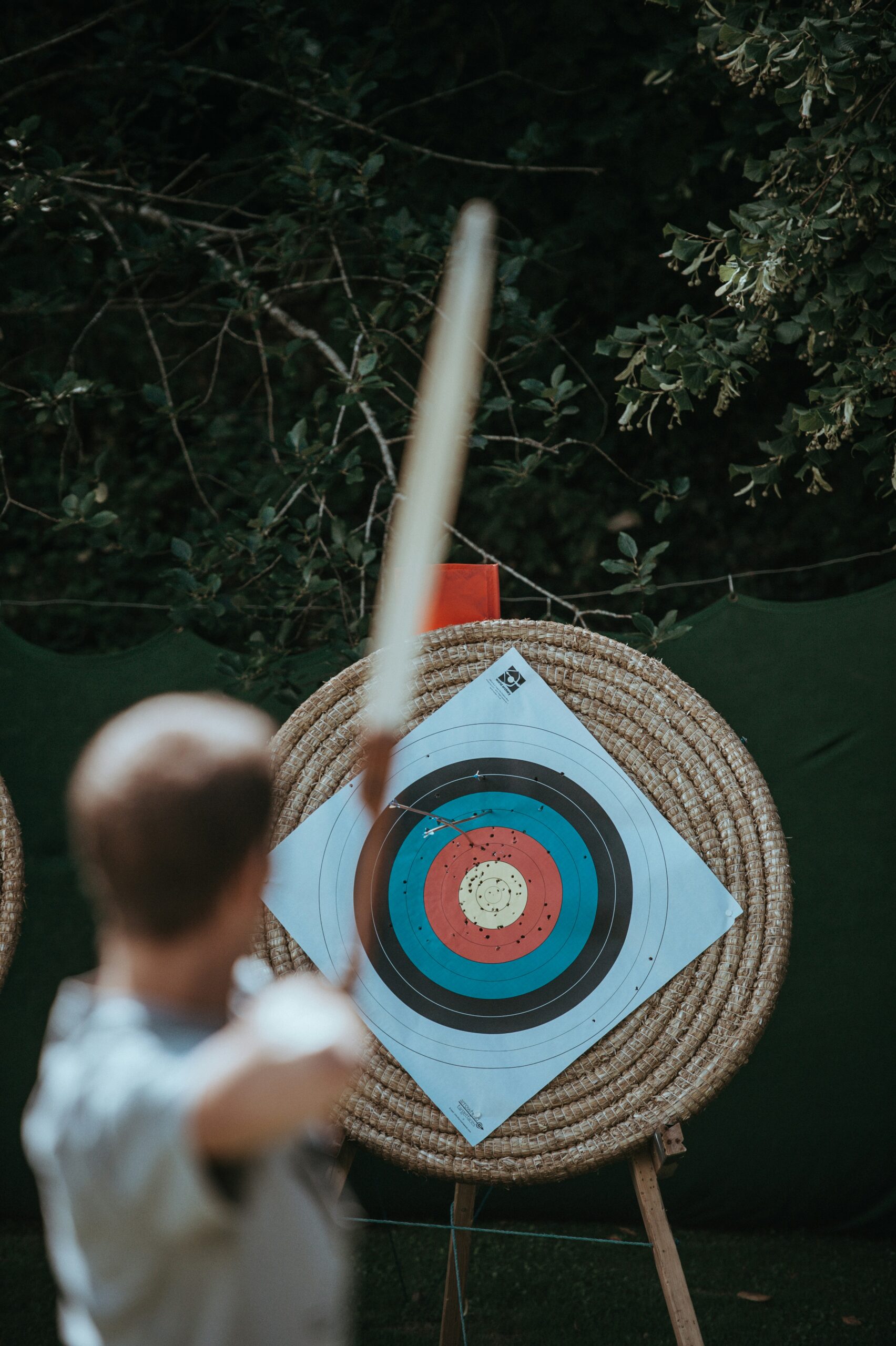Archery tag has evolved from a fun, recreational activity into a competitive sport that demands precision, strategy, and safety. This article explains the fundamentals of archery tag target competitions in detail and outlines essential equipment, rules, techniques, and event organization strategies for success. With the increasing popularity of archery tag as an activity for corporate teams, young adults, and families alike, this article aims to equip readers with the practical knowledge required to excel in any tournament setting. Let’s explore the intricacies of archery tag target competition guidelines and explore each component in depth.
Understanding Archery Tag Target Competition Fundamentals

Archery tag target competitions are designed around scoring rather than elimination, demanding accuracy and strategic execution. Unlike casual play, these formats emphasize clearly defined targets and boundaries. Players use foam-tipped arrows to hit marked zones on competition targets, earning points based on accuracy. Matches are often structured with time limits, neutral zones, and boundaries to encourage fair, dynamic play.
How Target-Based Scoring Keeps Games Competitive
Archery tag target games rely on point zones to maintain intensity. Hitting the center earns the most points, while outer rings offer fewer, adding layers of strategy. Unlike elimination games, players remain active throughout the match, allowing everyone to contribute until the final shot. This dynamic encourages precision and keeps players engaged from start to finish.
The Role of Boundaries and Game Zones
Target competitions use neutral zones and boundary lines to maintain safe, structured play. These designated areas limit movement but enhance gameplay by encouraging calculated shots and clever positioning. Clear field markers help participants understand where to move and shoot, increasing safety and strategic opportunities.
Team Play Meets Competitive Archery
While based on individual scoring, archery tag target matches thrive on teamwork. Groups coordinate their shots and cover zones in corporate events or parties. This collaborative format fosters communication, boosts energy, and introduces a fresh team-building twist to modern competitive archery activities.
Essential Archery Tag Target Competition Equipment and Setup

Gear matters in archery tag, and proper setup ensures safety, fairness, and fun. Players use bows tailored for foam arrows, which are lightweight and easy to handle for rapid shots. The arrows are foam-tipped for safety, making them perfect for indoor and outdoor events. Protective gear like arm guards and face masks is mandatory, safeguarding players from close-range hits. Competition arenas are lined with bright markers and scoring zones, inspired by field and target archery setups. Whether it’s a company event or birthday bash, a great setup makes all the difference.
Choosing the Right Bow and Arrow Setup
Foam-tipped arrows and low-draw-weight bows create a safe yet exciting environment for all skill levels. These tools are designed for controlled shots while keeping energy levels high. Matching gear to the age and strength of participants allows for more accurate gameplay and keeps things accessible for beginners and pros alike.
Protective Gear for Safety and Comfort
Helmets, arm guards, and gloves are key safety gear during competitive archery tag. These items reduce risk without hindering movement, making them ideal for action-packed rounds. Enforcing gear use ensures every player feels confident stepping into the arena, from birthday parties to team-building events.
Designing a Fun and Fair Play Arena
A well-marked competition field brings energy and structure to each match. Zones are color-coded for visibility, scoring targets are placed at optimal distances for challenge and fun. These elements mimic traditional target archery formats while supporting the quick pace that defines modern archery tag entertainment.
Adhering to Archery Tag Target Competition Rules and Regulations

Every archery tag competition thrives on consistent, easy-to-follow rules. These include scoring systems, movement restrictions, and penalties for unsafe behavior. Game rules ensure fairness, prevent chaos, and allow participants to focus on having fun while playing safely. With referees overseeing play and enforcing boundaries, each match flows smoothly. The structure combines the spirit of field archery with fast-paced action, making it ideal for corporate events, parties, and casual tournaments. Strong regulations not only protect players but elevate the competitive experience.
Scoring Systems That Reward Precision
Point zones on targets determine how players rank in a match. Shots closer to the center earn more points, keeping the pressure on throughout the game. This system encourages accuracy and replicates elements of professional target archery in a recreational setting that’s perfect for team competition.
Rules That Promote Fair and Strategic Play
Participants must remain within their zones and follow turn-based or time-based shooting. Moving into restricted areas or firing prematurely results in penalties. These boundaries are essential to keep the game structured and fun while ensuring everyone gets equal opportunity to shine.
Referees Maintain Flow and Safety
Referees keep games fair by enforcing rules and monitoring safety. They call out fouls, award points, and settle disputes. Their presence ensures consistency, especially in larger events where structure is key to keeping everything on track and maximizing player enjoyment.
Mastering Skills for Archery Tag Target Competition Success

Players need sharp focus, reliable technique, and solid teamwork to excel in archery tag target games. These matches are more than just firing foam arrows—they demand quick decisions and controlled movement. Practicing aim, posture, and reaction time helps participants improve steadily. Just like in competitive field archery, success in target matches depends on preparation. Group events also benefit from practicing communication and rhythm, especially during team-based challenges. Consistent skill-building makes the game even more enjoyable, whether you’re a first-timer or returning player.
Fine-Tuning Your Aim and Posture
A balanced stance and steady draw create better control over each shot. Players should plant their feet shoulder-width apart and maintain a firm grip for stability. These techniques, borrowed from traditional archery disciplines, ensure each arrow reaches its target more effectively.
Practicing Quick Draws and Recovery
Rapid target games demand quick thinking. Practicing fast reloads and controlled releases prepares players for the pace of modern competitive archery tag. These drills are perfect for groups wanting to sharpen their performance during fast-paced corporate or group events.
Staying Focused in High-Energy Matches
Target archery competitions test your ability to stay calm under pressure. Techniques like breathing control and consistent timing help players shoot accurately, even with high excitement. Mastering this focus adds confidence and elevates gameplay in both casual and competitive environments.
Prioritizing Safety in Archery Tag Target Competitions

Safety is at the heart of archery tag competitions, and every match begins with detailed briefings. Players are shown how to handle their gear properly, wear protection, and follow movement guidelines. Event organizers reduce risks by using safety zones, barriers, and pre-game inspections. Protective gear, including masks and guards, is mandatory and strictly enforced. The game’s design limits harmful contact while maximizing engagement. With systems inspired by field archery safety standards, the result is a competitive yet secure setting perfect for high-energy entertainment.
Pre-Game Safety Briefings and Gear Checks
Before any arrows fly, referees and staff walk players through rules and safety steps. These sessions cover equipment handling, field movement, and gear checks. This is a necessary step to ensure everyone enters the arena ready to play safely and confidently.
Referees Enforce Safety in Real Time
Officials monitor every aspect of the game, flagging risky behavior and halting play if necessary. Their presence ensures a quick response to any incidents, keeping players safe while preserving the fun and pace of archery tag competitions.
Field Design That Prevents Injuries
Safety barriers, clear field zones, and spectator boundaries create a well-controlled environment. These design choices prevent collisions and protect players and observers, making archery tag a reliable option for parties, team events, and community gatherings.
Organizing Successful Archery Tag Target Competition Events

Pulling off a great archery tag competition takes more than bows and arrows—it demands detailed planning and teamwork. From choosing the right venue to managing players, every element must support smooth, exciting gameplay. Layouts should allow for safe movement, clear scoring, and enthusiastic spectatorship. Whether hosting a birthday event or a company tournament, organizers should build clear brackets and use mobile apps or displays to track scores. With the right systems, archery tag can transform any space into a high-energy, competitive entertainment arena.
Layouts That Maximize Action and Safety
An ideal venue has space for movement, shooting zones, and resting areas between matches. Good layouts mimic field archery setups, adding safety buffers and scoreboards. This design enhances both safety and the immersive experience.
Smooth Registration and Bracket Management
Digital systems simplify participant check-in and competition flow. Organizers can match players by skill or randomly assign brackets for variety. These systems speed up event operations and ensure a better experience for everyone involved.
Wrapping Up With Recognition and Fun
After the final match, awards, shoutouts, and team photos keep energy high. Recognizing winners and highlighting great sportsmanship adds lasting value to the experience. These moments create memories, especially at community or team-building archery tag events.
Frequently Asked Questions
What is archery tag target competition?
Archery tag target competition is an organized shooting sports event where participants use bows and foam-tipped arrows to hit designated targets. The competition emphasizes accuracy, strategic scoring, and safety in a dynamic team or individual format. Rules and equipment closely mirror those found in traditional archery sports.
How do scoring systems work in these competitions?
Scoring systems in archery tag target competitions assign point values based on where arrows hit on the target. Higher scores are awarded for hitting the center of the target, while outer zones yield lower points. In case of a tie, tiebreaker rounds are conducted to determine the winner, ensuring a transparent and competitive format similar to Olympic-level target archery.
What protective gear is required?
Mandatory protective gear includes arm guards, finger tabs, and sometimes helmets to prevent injuries. All participants must undergo a pre-game safety briefing where proper handling techniques for bows and foam-tipped arrows are reviewed. This gear is essential for maintaining safety and is standard in competitive shooting sports.
How should the competition field be set up?
The field setup requires clearly defined boundaries, designated target zones, and neutral zones to facilitate safe movement and fair play. Equipment such as targets must follow standardized specifications. Organizers use vibrant markers and digital scorekeeping tools to ensure clarity, aligning with professional competitive archery event practices.
How can participants improve their shooting skills?
Participants can improve by focusing on proper stance, consistent shooting techniques, and regular practice of drills that enhance accuracy, speed, and response under pressure. Incorporating techniques from traditional archery training and sports psychology can further boost performance. Continuous refinement through video analysis and structured feedback is recommended for long-term success.
Conclusion
Archery tag target competitions offer a challenging yet rewarding blend of physical skill, strategic planning, and safety-focused discipline. By understanding the fundamentals, equipment requirements, rules, skills, and safety measures, competitors can elevate their gameplay and enjoy a secure, exciting experience. Successful event organization further enhances the competitive atmosphere and ensures fair play for all participants. With these comprehensive guidelines, enthusiasts can look forward to both improved performance and increased enjoyment in every tournament they join.

